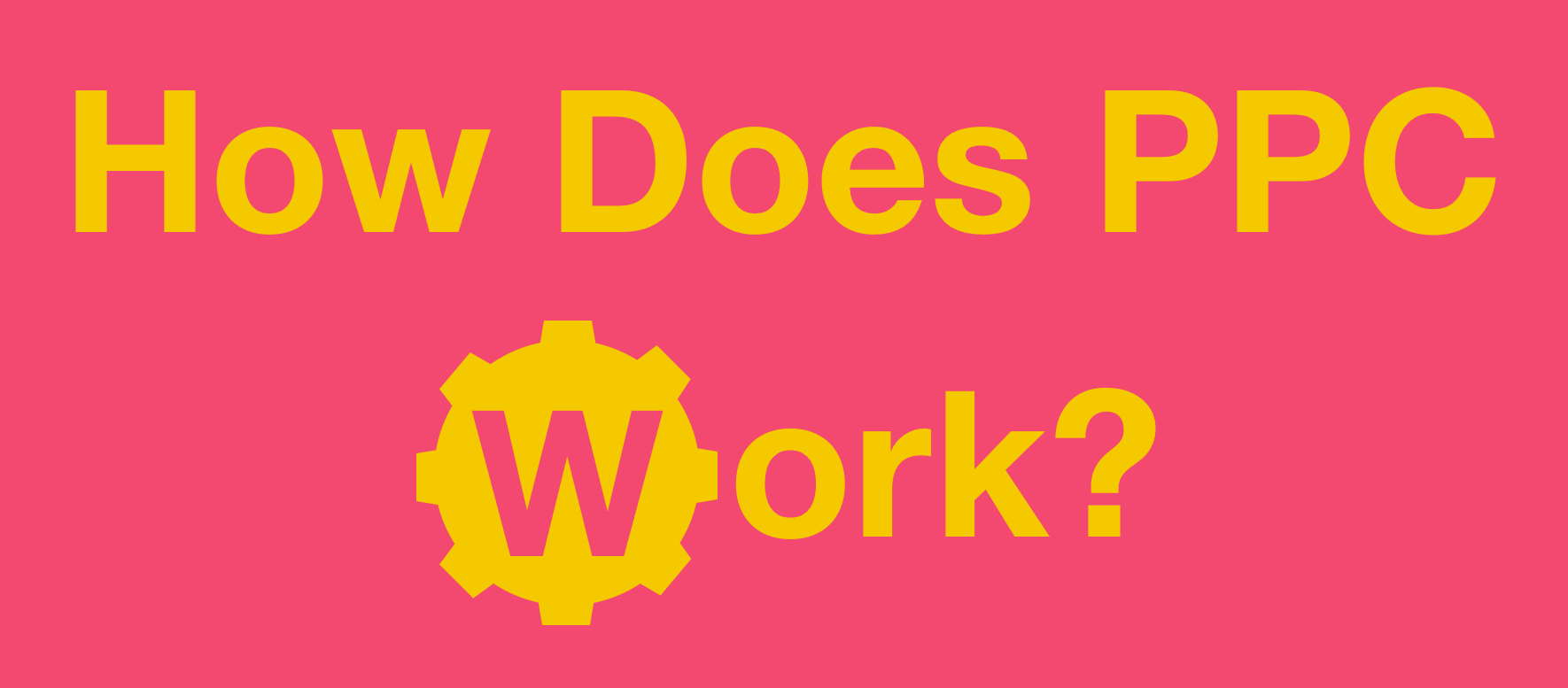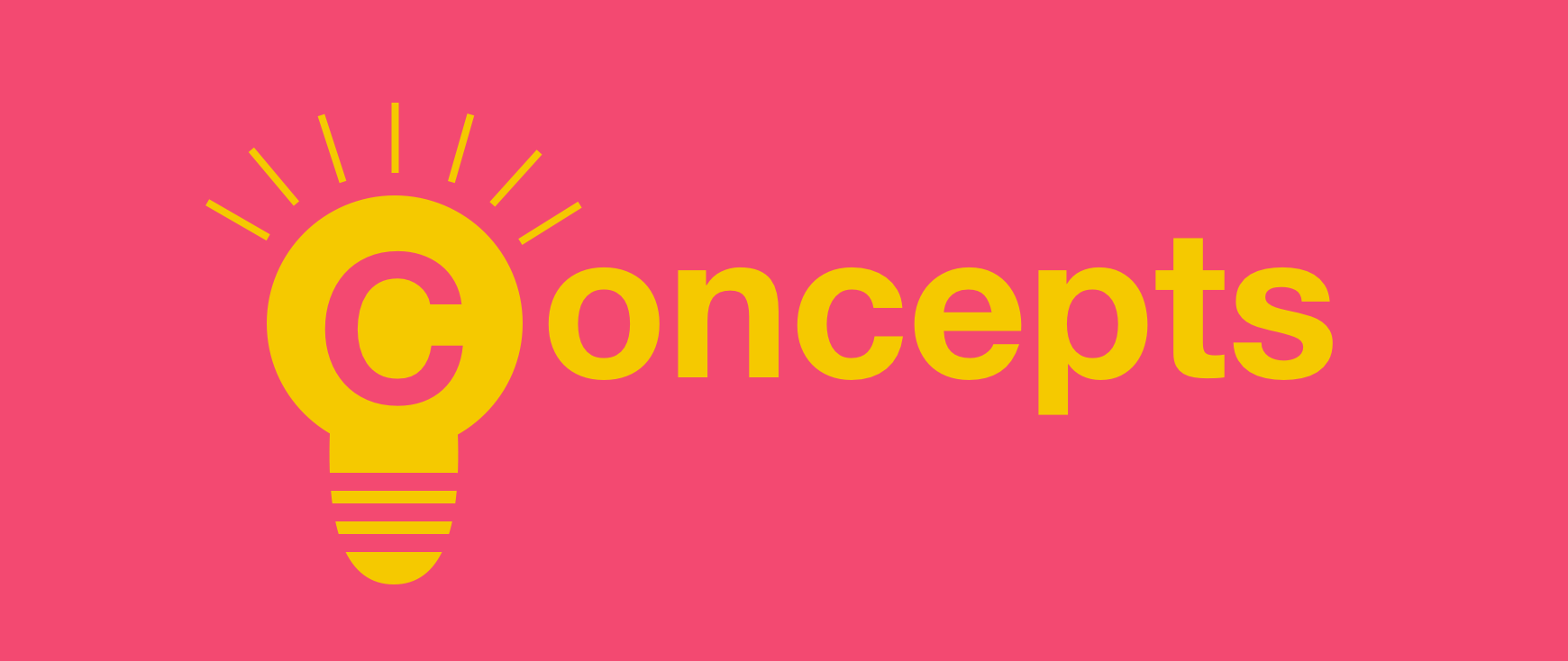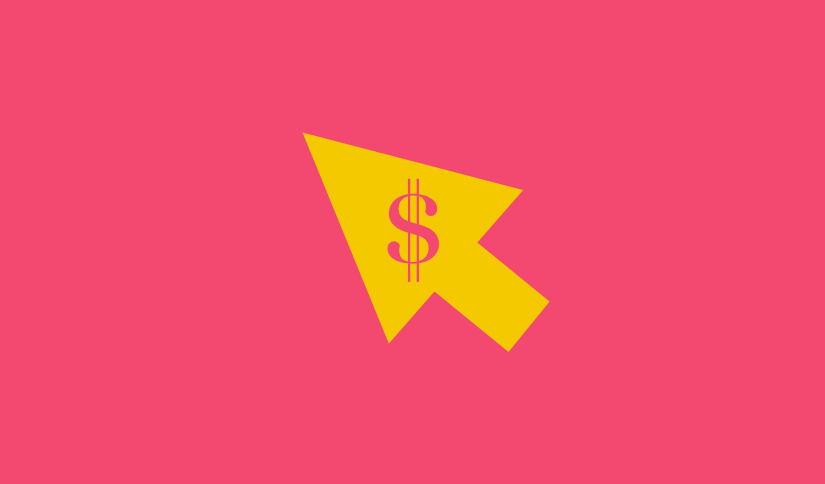When it comes to online advertising, one of the oldest and most common advertising models is pay-per-click, or PPC.
One of the largest benefits of the PPC model is its efficiency. With PPC, advertisers only pay publishers when an ad is clicked. This allows advertisers to measure their campaigns in a more quantifiable way and prevents them from having to invest their budget in a campaign that might not net a great return.
It’s important to understand how the advantages of PPC put it ahead of other marketing models. Whether or not you feel like using the PPC model, it is still an important concept to get your head around.
How Does PPC work?

The PPC model is based around the use of keywords.
The most basic example of this is when you’re using a search engine. Online ads (sometimes called sponsor links) will appear for products or services related to the keywords a person searches for. For example, adverts for swimsuits will show up when you search for keywords like “swimming”, “pool”, or “beach”.
Companies that rely on PPC models will do research and analysis to find the most relevant keywords for their products or services. They can then invest in those relevant keywords. This in turn, hopefully, results in a higher number of clicks and, eventually, a higher profit.
The PPC model is beneficial for both the advertiser and the publisher.
For advertisers, PPC allows them to advertise products and services to a specific audience that is actively searching for related content. In addition to that, a well-planned PPC campaign could save an advertiser a substantial amount of money, as the value of each visit from a potential customer outweighs the cost of the click to the publisher.
For publishers, PPC can provide a primary revenue stream. The best examples of companies that use PPC are first-tier search engines like Google and Bing, or social media sites like Facebook and Twitter. These sites provide a free service to their userbase (free web searches and social networking). That means that PPC ad campaigns are usually the best way that these “free” websites can monetize their site’s traffic.
Key Concepts in PPC

Cost-per-Click (CPC)
The amount of money an advertiser pays for each click is a PPC model’s CPC or cost-per-click. The cost-per-click of a PPC model is usually determined by way of either a flat-rate model or a bid-based model.
Flat-Rate Model
In a flat-rate model, the advertiser will pay the publisher a fixed fee for every click on an ad. Publishers tend to keep a list of different PPC rates that apply to different areas of their website. It’s not uncommon for a publisher to allow negotiations on their flat rates, especially if an advertiser is offering a long-term or high-value contract.
Bid-Based Model
In a bid-based model, advertisers make bids on an advertising spot with the maximum amount of money they’re willing to spend on the ad. Then, the publisher runs those bids through an automated auctioning tool. Whenever a visitor triggers an ad spot, the auction is run.
Important to note, the “winner” of the auction is not usually determined by the amount of money offered, but by the “rank” of that money. The rank considers the quality and relevance of the content offered by the advertiser, not just the amount of money offered. This means that the relevance of the content is an important aspect of the bid. In the Google Ads platform, this is known as the “Quality Score”.
Click-through Rate (CTR)
The CTR is the percentage of users who click on an ad out of the total number of users who’ve seen it. In general, the better the advertisement, the better the CTR.
Impressions
In PPC models, an “impression” refers to the number of views an ad gets. It doesn’t matter if the user clicks on the ad or not, it is still classed as an impression.
Segmentation
With PPC (and online advertising in general) an advertiser has an amount of control when it comes to who sees their ads. A larger audience can be segmented into smaller groups based on factors like age, gender, location, interests, etc.
Publishers can offer different options to combine these segments to allow advertisers a higher level of accuracy when it comes to their ad campaigns. This allows advertisers to better ensure that they’re paying for clicks from users that are more likely to become customers.
Landing Page
The landing page is where the user is directed to after they’ve clicked on the ad. This page must be well optimized because it’s here that a user can end up converting or leaving in a matter of seconds.
Conversion
Conversion is one of the most important metrics of a PPC campaign, as it involves the measurement of an ad’s performance in economic terms. In broad terms, conversion refers to each of the purchases a user makes after they’ve clicked on an ad.
Frequency
In PPC, frequency is the number of times an ad is shown to a specific user during a given timeframe. Usually, a user will see an ad several times. This ensures that they are more likely to engage with the ad. However, if the frequency of an ad is too high, a user can feel bombarded. If that happens, they can end up rejecting the ad altogether.
Pay-Per-Click Tips

Don’t Always Be Too Conversion Focused
Most people that manage pay-per-click campaigns get hyper-focused on click-throughs and conversions.
It’s understandable that for some campaigns you want a high click-through rate and a high number of conversions. However, don’t forget about marketing 101. Impressions have value.
The more your target audience sees your ads, the more you, generally, build trust and authority with that audience. If your product or service has a long sales cycle, it’s wise to think about this aspect of online advertising.
Many SaaS (subscription as a service) companies get disappointed by their pay-per-click performance because the cost-per-clicks are high and the conversions are low. Additionally, those who convert sometimes cancel their accounts.
Marketers that run these campaigns can feel disheartened and decide to quit pay-per-click as a marketing channel. This is a mistake.
Often, it’s more a matter of warming up your target audience to your brand and your offer before they’re ready to spend money on your service. It can take months or even years of solid advertising to prove to your audience that you’re a solid industry player that’s here to stay.
Finally, even if your pay-per-click advertising doesn’t seem to be working (if you’re strictly conversion focused), those months and years of online advertising are still considered a “marketing touch”.
Marketing touches assist in customer growth. It can be that multiple marketing touches from several different marketing campaigns and interactions will turn someone into a paying customer. It can also help with word-of-mouth marketing. These assists are nearly impossible to track for businesses with long sales cycles.
Don’t Blindly Accept Platform Suggestions
Pay-Per-Click advertising platforms will program in automated suggestions that, if you accept the suggestions, will automatically make changes to your account. Robots do not know what your strategy is. We highly recommend that you make your own account and campaign changes that are in line with your current experiments and strategy.
Plan Your Marketing Strategy First
Before you do any advertising, be sure to create a marketing strategy first. Your marketing strategy should be aligned with your overall company/business goals and vision. This will help you steer your advertising, nail down messaging, tighten up offer language, and make everything much easier. It’s way easier to create pay-per-click campaigns when you know where you want to go!

